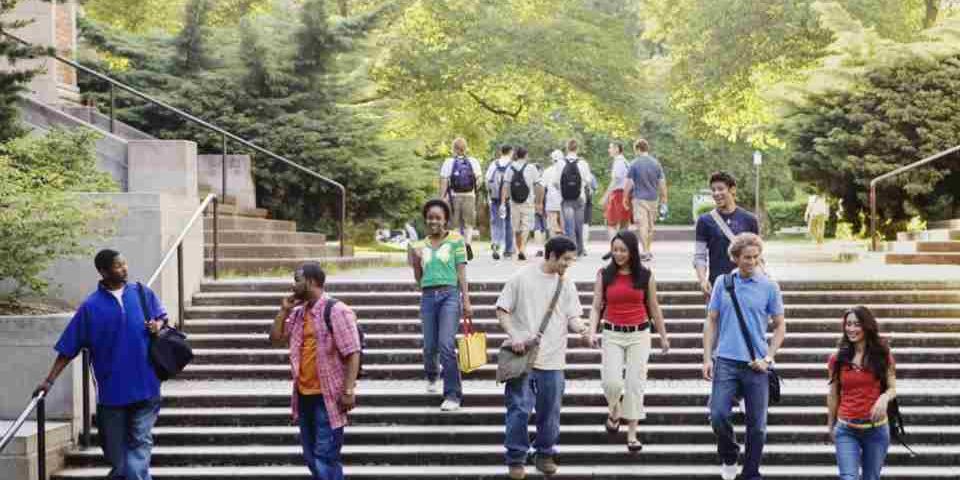A new report shows the U.S. has more than 1 million international students studying in the country for the third straight year, but growth is at its slowest rate in more than a decade.
- 如有疑问,请联系电邮
- contact@eetcgroup.com
USNEWS:美国留学生增长为何放缓?

史蒂文森高中(New York, NY)
2018年12月26日
加州理工学院(California Institute of Technology, Pasadena, CA)
2018年12月27日By Josh Moody
又一篇来自于USNEWS教育专栏作家的重磅文章。
本文首先描述了当前美国留学生的高等教育情况,其次是分析了这种情况的原因。数据表明,中国、印度、韩国、沙特阿拉伯和加拿大仍然是最大的留学生派遣国,但是这些国家的学生数量正在放缓,甚至在某些情况下还在下降。2017-18学年,中国招收学生363341人,增长3.6%,印度招收学生196271人,比前一年增长5.4%。韩国、沙特阿拉伯和加拿大来美留学的学生都出现了下降,这是这些国家最近的趋势。美国的韩国学生人数下降了7%,沙特阿拉伯下降了15.5%,加拿大下降了4.3%。报告显示,美国连续第三年有100多万国际学生在该国学习,但增长速度是十多年来最慢的。2017-18学年,271738名国际学生首次在美国学院或大学入学。国际学生总数增长1.5%,至1094792人。这种结果实际上是由于一系列因素造成的,其中一些与美国政策有关,但也与其他国家的政策有关。
美国的因素主要包括高等教育成本的上升,以及留学生就业政策的收紧。而留学生来源国则提供的一些激励措施或限制措施,如提高奖学金和限制资金外流等。
这些政策的影响还是比较明显的。但是我们分析美国留学仍然有其巨大的优势,尤其是在最优秀学生的争夺战中,还没有任何其它国家有能与美国高校竞争的实力,毕竟这是需要学校的综合竞争力来支撑的。但美国财政压力的增加,教育支出的收紧,这都对美国高等教育是一个巨大的挑战。在非顶级大学的序列外的大学,尤其是公立大学的生存将成为一个难题。国际留学生仍是缓解学校财政压力的一个有效措施之一,这也是教育产业化的出口之一。
对于中国留学生,每年30多万的人数,这是一个巨大的基数。由于美国每年H1-B就业指标的限制,这里绝大多数的学生,仍然是以回国发展为主。所以,既然仍能保持如此巨大的留学基数,说有在美国就业已经不是留学的主要目的,提高个人的综合技能、适应国际化发展的需求,已经成为当前中国家庭对出国留学的主要诉求!所以,对于美国的一些新的就业相关政策,实际上对中国留学生影响不是很多。既然如此,对于中国留学生来,美国高等教育仍然有其巨大的优势。
下面我们就来阅读一下原文,以期发现作者所想表达的当前的留学生与美国高等教育的关系发展趋势。
The 2018 Open Doors Report on International Education, released by the Institute of International Education, found that 271,738 international students enrolled for the first time at a U.S. college or university in the 2017-18 academic year. The size of the total international student population increased by 1.5 percent to 1,094,792.
“We’re seeing growth, but yes, we’re also seeing some slowdowns. That’s really due to a range of factors, some of which have to do with the U.S. but many of which have to do with other countries,” says Rajika Bhandari, senior advisor for research and strategy at IIE.
Such factors, Bhandari says, include the rising costs of American higher education and incentives offered by other countries, such as free tuition and pathways to citizenship.
Growth in the international student population is at its lowest since 2005-06, when it decreased slightly. Signs of this recent slowdown first appeared in the 2016-17 school year when the international student population increased by a mere 3.4 percent. That came after a period of strong growth, with the number of international students increasing 7.1 percent in 2015-16 and 10 percent in 2014-15.
In addition to competition from other countries, admissions counselors say safety is a concern for international students and their families, citing mass shootings, as well as a political climate which has seen restrictions placed on travel to the U.S. from some majority Muslim nations.
“Another large concern among prospective students is not feeling welcome amidst national rhetoric that targets certain countries,” Lisa A. Maroni, associate director of international outreach at Shoreline Community College, wrote in an email. “Of course, the worst anxiety was provoked by the many iterations of the ‘Muslim ban,’ but it continues to be inflamed with comments such as those that denigrate nations in Africa, create distrust of people coming from Latin America or those that accuse Chinese students of being spies.”
But Allan E. Goodman, IIE president and CEO, says his team isn’t hearing those same concerns.
“We’re not hearing that students feel they can’t come here. We’re hearing that they have choices, we’re hearing that we have competition from other countries,” Goodman says.
China, India, South Korea, Saudi Arabia and Canada remain the top sending countries, however the number of students from these countries is slowing, even in some cases declining. China sent 363,341 students for the 2017-18 academic year, up 3.6 percent, and India sent 196,271 students, an increase of 5.4 percent over the prior year.
South Korea, Saudi Arabia and Canada all saw a decline in students coming to the U.S. to study, which has been a recent trend for those countries. The South Korean student population in the U.S. declined by 7 percent, Saudi Arabia by 15.5 percent and Canada by 4.3 percent.
Goodman adds that limited growth also comes from countries such as Saudi Arabia scaling back generous scholarship programs, as seen in the significant decline in Saudi students.
Caroline Casagrande, a Department of State official, says it is “unwarranted” to attribute the slow growth rate to the political climate, noting the U.S. still has the most international students.
But college officials say concerns persist among prospective international students.
“There are a lot of questions now about what is going to happen in the future with U.S. immigration policies (and) visa policies,” says Natalie Mikulak, associate director for international recruitment and outreach at the University of Colorado—Boulder.
She says those questions began to increase around the 2016 U.S. presidential election.
A 2017 survey of prospective international students by higher education firm Royall & Company, now known as EAB Enrollment Services, found that 32.7 percent of the 2,104 respondents indicated a decline in interest in studying in the U.S. due to the presidential administration, travel restrictions, safety and cost.
“They just really want to know if they’ll be welcome,” Mikulak says.
To ease those concerns, she says CU—Boulder has done more individualized outreach to international students, connecting them with peer mentoring resources. The institution also offers an International Student Guide Program, which pairs those students with American students during orientation and for group activities throughout the semester, and a Boulder Friends of International Students group, which connects students with local families for a full academic year of monthly meetings and activities.
Numerous universities around the country also have participated in the #YouAreWelcomeHere campaign, bringing the hashtag to life with scholarship opportunities for international students.
Muhammad Rasul, an international student from Pakistan studying at Florida State University, wrote in a Twitter direct message that he has had a “wonderful experience” in the U.S., though it has not been without issues. Rasul says he’s experienced “a sense of hostility” in the U.S., including racial remarks.
Those experiences, however, have not been on campus.
“Florida State is where I actually feel very safe, despite all the shootings,” Rasul says, referencing acts of gun violence that have occurred in Florida and around the country.
Stacy Soderstrom, assistant director for international student and scholar services at Central Washington University, says she has noticed increased questions around guns and safety.
“To address these concerns, CWU consciously promotes our safe, small, welcoming town in Washington state. We speak candidly about gun laws in our state when asked, which are among the strictest in the country,” Soderstrom wrote in an email.
While admissions counselors agree that they are hearing increased concerns about gun violence and the political climate, they also acknowledge that cost is an issue.
“Universities in Europe offer degrees in English and many at a significantly more affordable cost than the U.S.,” says Soderstrom, adding that those schools have stepped up recruiting efforts.
Maroni says simplified visa procedures in Canada have attracted more international students.
Another factor, she says, is the desire for students overseas to stay closer to home, choosing to attend universities in countries such as South Korea, Australia, Singapore and Malaysia.
“The biggest new development is that there are real competitor countries out there that we’ve never had before,” Goodman said.




